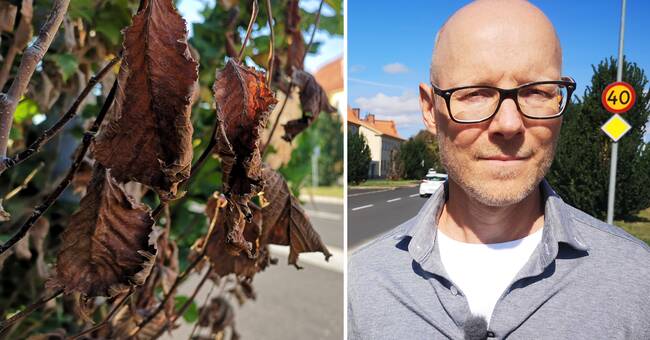Kalmar has long been spared from the dreaded elm disease (see fact box), but in the last 2-3 years it has been possible to see a rapid deterioration in the city's elm population. In the elm-lined parade street Fredriksskansallén, today about every fourth tree is brown and withered.
- We expect that within ten years we will have no elms left in Kalmar, says Anders Linder, landscape architect at Kalmar municipality.
Replaces with other tree speciesThe municipality's strategy today is to cut down all trees that have been infected or died of elm disease, so that it will not spread to healthy elms. The removed trees will eventually be replaced with other tree species, but the large old elms still leave holes in the cityscape.
- People get involved when we take down trees and wonder if we really have to, but then we explain that dead trees we can not have standing in an urban environment, it can be a danger, says Anders Linder.
Plans: "Allé 2.0"This year, they have also chosen to "vaccinate" 10 old elms in the city park against the infection, something that is costly and must be done annually. But in the long run, the people of Kalmar must get used to a changed cityscape, without large alleys like those at Fredriksskans and on Stensövägen.
Anders Linder talks about something he calls "avenue 2.0":
- It is an avenue where the trees do not stand in strict rows, but perhaps only on one side of the road in a wider zone. They are in shock and are of different species, perhaps even of different heights. All to protect us against future diseases on different tree species. Then you have spread your risks with one with greater diversity in your tree stand, he says.

